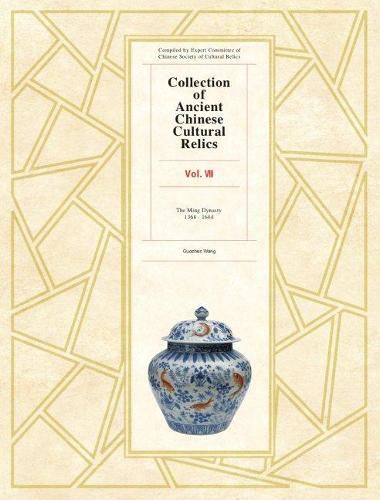Readings Newsletter
Become a Readings Member to make your shopping experience even easier.
Sign in or sign up for free!
You’re not far away from qualifying for FREE standard shipping within Australia
You’ve qualified for FREE standard shipping within Australia
The cart is loading…






At the end of the Yuan Dynasty, a series of crises broke out after years of accumulated unrest, and uprisings against the regime erupted everywhere. The Yuan Dynasty was on the edge of collapse. Many separate regimes emerged all over the country. Eventually the Han and Dazhou regimes were overthrown by an insurrectionary army led by Zhu Yuanzhang, who proclaimed himself Emperor Nanjing in1368 and he gave his new dynasty the name Ming. Over the following close on 300 years, the new dynasty would witness reunification and reconstruction in the early years, followed by economic and cultural prosperity in the Jiajing and Wanli eras, and political corruptions, internal disorder and foreign invasions in the latter period. The Ming Dynasty would represent a zenith of feudal society in Chinese history. The Ming Dynasty gained access to rich jade resources and jade ware became more diversified. The emphasis was on exquisite items of daily use, ornaments, and ornamental furnishings. The period also saw the development of porcelain making., building on the foundation of the Song and Yuan Dynasties. The Jingdezhen Kiln, built in the Five Dynasties, became the domestic centre of porcelain making. Over-glazed colour techniques experienced rapid development, with under-glaze blue and white porcelain became prominent. Calligraphy continued in the style of the Somng and Yuan Dynasties, but many new genres developed: Three Songs, Two Shens, Three Calligraphers of the Wu School, and the Four Masters. Paintings in this period continued to develop with three different stages: imperial court decorative painting, and the Zhe school and the Four Pillars of the Wu School; and Xieyi. This book, the seventh in a ten-volume collection, brings to the English-speaking world a series of books from China which has been complied by an Expert Committee of the Chinese Society of Cultural Relics. There are 379 descriptions.
$9.00 standard shipping within Australia
FREE standard shipping within Australia for orders over $100.00
Express & International shipping calculated at checkout
At the end of the Yuan Dynasty, a series of crises broke out after years of accumulated unrest, and uprisings against the regime erupted everywhere. The Yuan Dynasty was on the edge of collapse. Many separate regimes emerged all over the country. Eventually the Han and Dazhou regimes were overthrown by an insurrectionary army led by Zhu Yuanzhang, who proclaimed himself Emperor Nanjing in1368 and he gave his new dynasty the name Ming. Over the following close on 300 years, the new dynasty would witness reunification and reconstruction in the early years, followed by economic and cultural prosperity in the Jiajing and Wanli eras, and political corruptions, internal disorder and foreign invasions in the latter period. The Ming Dynasty would represent a zenith of feudal society in Chinese history. The Ming Dynasty gained access to rich jade resources and jade ware became more diversified. The emphasis was on exquisite items of daily use, ornaments, and ornamental furnishings. The period also saw the development of porcelain making., building on the foundation of the Song and Yuan Dynasties. The Jingdezhen Kiln, built in the Five Dynasties, became the domestic centre of porcelain making. Over-glazed colour techniques experienced rapid development, with under-glaze blue and white porcelain became prominent. Calligraphy continued in the style of the Somng and Yuan Dynasties, but many new genres developed: Three Songs, Two Shens, Three Calligraphers of the Wu School, and the Four Masters. Paintings in this period continued to develop with three different stages: imperial court decorative painting, and the Zhe school and the Four Pillars of the Wu School; and Xieyi. This book, the seventh in a ten-volume collection, brings to the English-speaking world a series of books from China which has been complied by an Expert Committee of the Chinese Society of Cultural Relics. There are 379 descriptions.